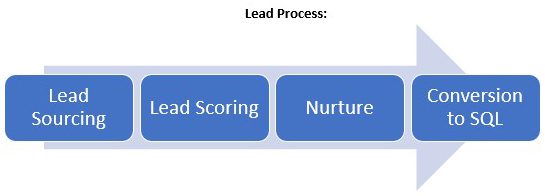Effective Lead Management – Governance and Lead Attribution

Lead generation is critical to all revenue growth strategies.
During part one of our two-part article series on lead generation, we explored a framework based on product attributes and selling motion to drive lead volume and investment. Part two will address governance and lead attribution.
Lead process governance is critical to ensure that the leads stay as high quality as possible as organizations strive to achieve lead quality over lead quantity. Lead attribution provides an understand of the efficacy of the various demand generation efforts in order to optimize investments.
Process and Governance:
A four-step governance process will ensure optimal lead quality during the early stages of the buyer journey.

- Lead Sourcing: Understanding where leads are coming from allows organizations to uncover how and why prospects are finding and engaging with your organization in the early part of the buyer journey. Tracking the efficacy of the various lead sources will allow the demand generation organization to optimize their demand generation strategy. As such, companies should implement a consistent set of policies focusing on lead attribution.
- Lead Scoring: Developing a clear lead scoring model routes leads to either the sales team or to the marketing engine for additional lead nurture. Criteria to include in the model will vary by organization, but common elements include website visits, data capture, marketing program engagement or product demo downloads. The lead scoring model is important to make sure that the sales team is receiving leads that will be more likely to convert to closed-won opportunities.
- Nurture: If a lead is not deemed ready to hand off to sales, it should be routed to a nurture campaign so that a prospect can continue to stay engaged with the organization with different marketing touches. This will ensure that organizations can reach the prospects at the right time during the buyer journey. Additionally, leads that do not convert to sales should also be routed for nurturing.
- Conversion to SQL: Best practice is to have a consistent set of policies and guidelines for determining a sales-qualified lead (SQL). Left to their own devices, salespeople will not consistently define SQL in a consistent manner. This often will result in breakdowns in a) the efficacy for using compensation programs with lead generation reps and b) the ability to track the efficacy of various marketing campaigns.
Finally, adherence to the process and data hygiene are key to ensure that leads are properly worked as customers/prospects initiate their buyer journey.
Lead Attribution:
Lead attribution (as referenced in the governance model) determines the impact of the different demand generation efforts. Attribution models determine where credit should be given in a conversion path. While there is not a straightforward way to determine a lead attribution model, below we explore three methodologies: First Touch, Last Touch and Multi-Touch:
First Touch: The lead is attributed to the first engagement that the customer/prospect had with the organization.
Last Touch: The lead is attributed to the last engagement prior to purchase that the customer/prospect had with the organization.
Multi-Touch: The lead is attributed to multiple lead sources. A linear multi-touch model equally credits all touchpoints. However, while this model will provide a significant amount of information, it will not provide details on which interaction was the most influential. A time decay model will give greater value to more recent touchpoints which is important in long-cycle sales processes.
While each of these models has benefits and pitfalls, the multi-touch approach allows for several interactions to be incorporated into the attribution model.
Takeaways:
Lead generation is critical to all revenue growth strategies, and organizations are investing more and more. To optimize lead generation efforts, companies need to determine the right mix of sourcing of leads and ensure there is a clear set of policies to manage and track leads throughout the entire process by understanding the following:
- Product attributes (innovative offering vs. standard offering) and selling motion (new logo vs. install base) are key factors in identifying lead sources
- A codified lead governance process is critical to ensure leads stay as high quality as possible as prospects move through the buyer journey
- While there are multiple lead attribution methodologies, the multi-touch approach provides the greatest level of customization
If you’re interested in learning more about how Alexander Group can help your organization, contact the Alexander Group Technology team.
Learn more about Alexander Group’s Technology practices.
___________________________________________________
Recommended Insights:
Attracting/Retaining Sales Talent Using Career Paths and Competencies
Driving Lead Volume and Investment
How Do Tech Companies Get Their Legacy Customers to the Cloud?